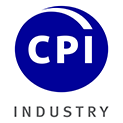Global evaporative cooling market expected to reach USD 5.95 bn by 2020
 The global evaporative cooling market was valued at USD 4.48 billion in 2015, and is projected to reach USD 5.95 billion by the end of 2020, at a CAGR of 5.84% during the forecast period 2015-2020,” said Thomas Morrison, Director of Marketing, Portacool.
The global evaporative cooling market was valued at USD 4.48 billion in 2015, and is projected to reach USD 5.95 billion by the end of 2020, at a CAGR of 5.84% during the forecast period 2015-2020,” said Thomas Morrison, Director of Marketing, Portacool.
Evaporative coolers cool air by filtering it through water, thus lowering the air’s temperature. “The optimal environment occurs when a small amount of outside air circulates into the space where the evaporative cooler is employed,” Morrison said. “This helps introduce fresh air into the environment and reduces the risk of poor indoor air quality.”
Portacool products, Morrison said, rely on the process of evaporation to produce cooler air, but highlighted that they do not discharge a mist, thus reducing the chance of spreading bacteria. “For older products [of evaporative coolers], however, algae or bacteria growth can result from improper maintenance,” he said. “For this reason, it is extremely important that our customers refer to their owner’s manual for proper cleaning and maintenance tips. An increase in humidity of approximately 2-5% is produced, depending on the temperature and humidity of the environment. This increase is not noticeable in a ventilated area, where the air produced by the cooler is exhausted.

